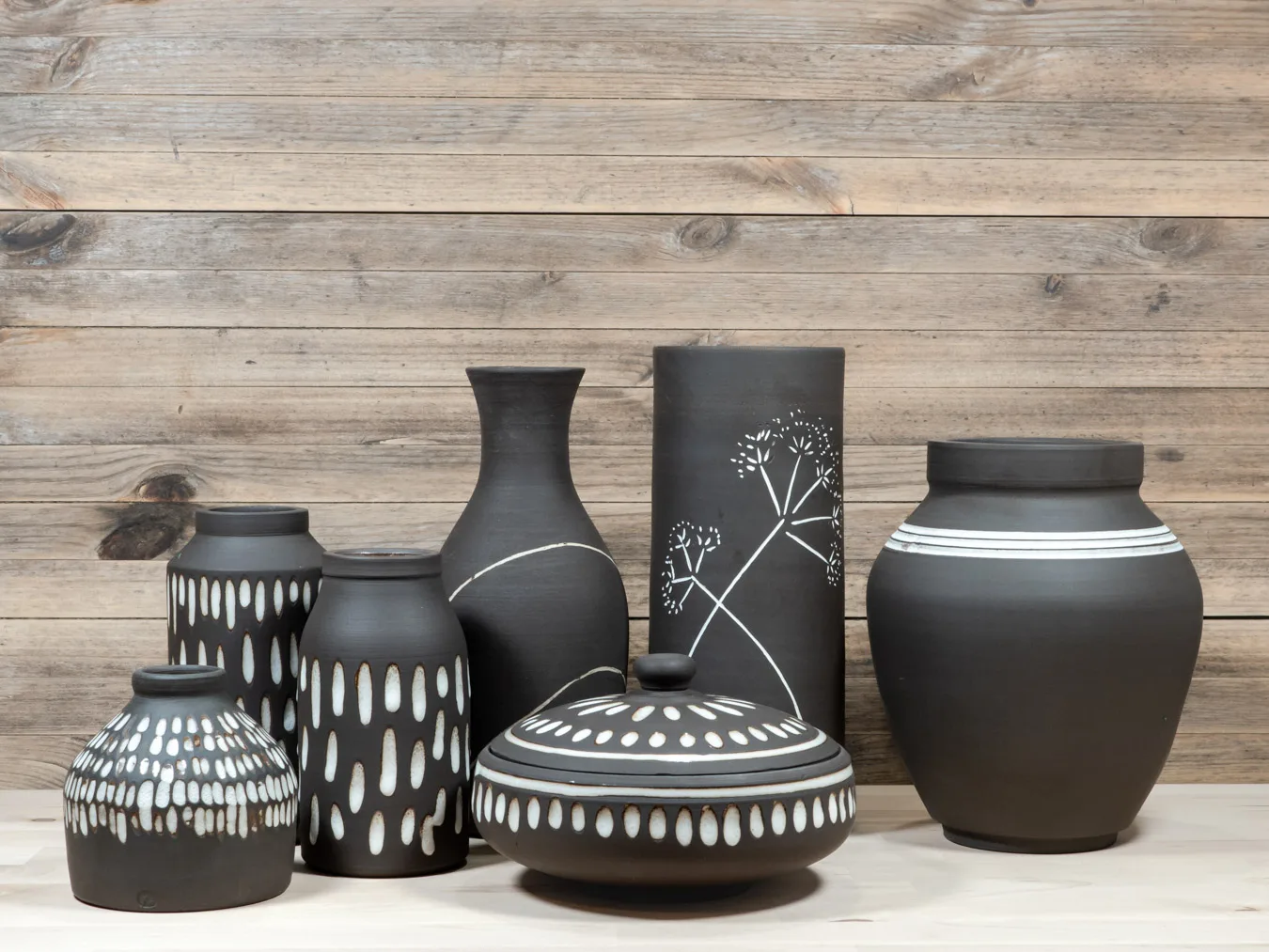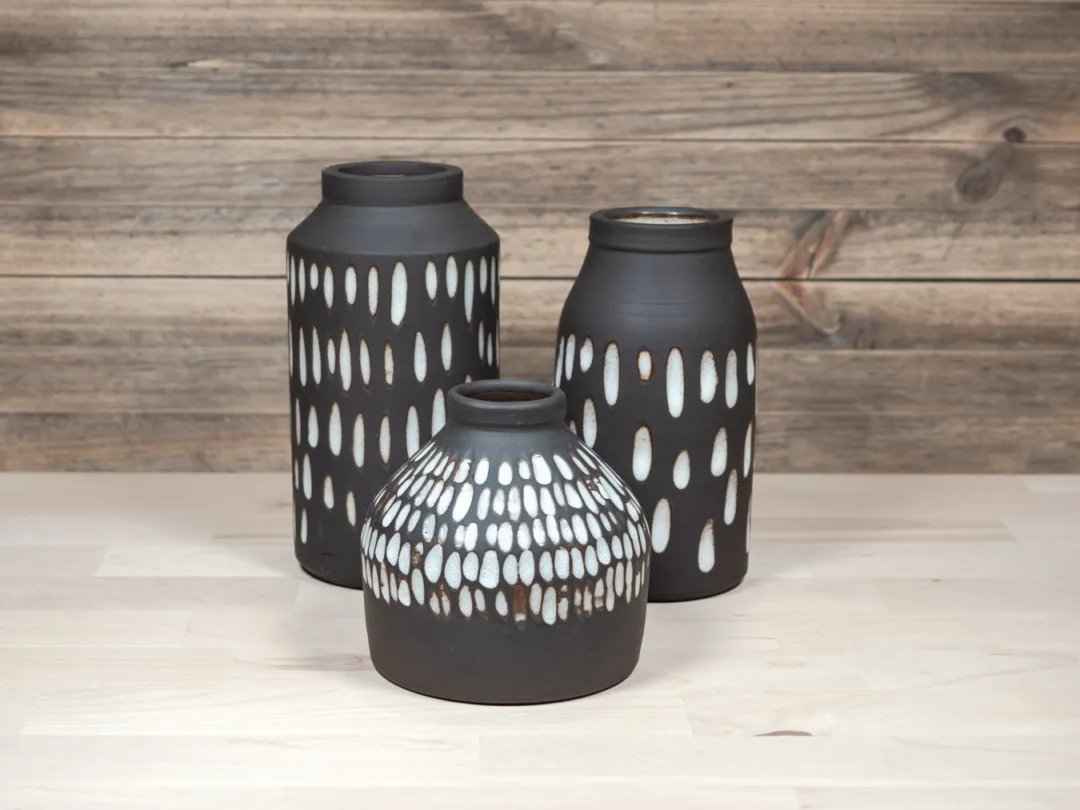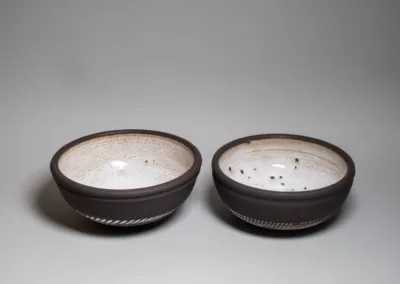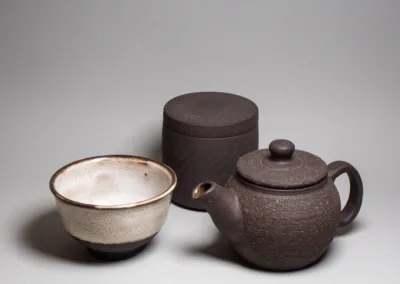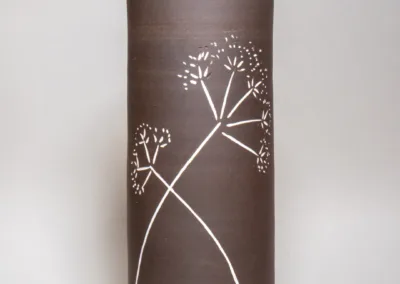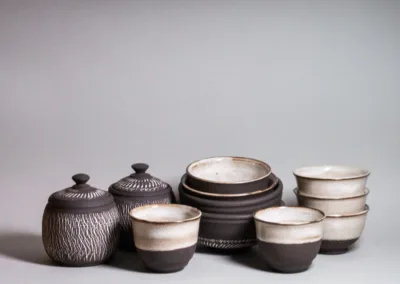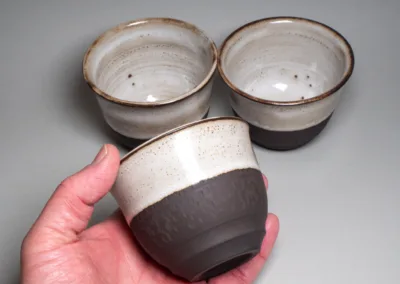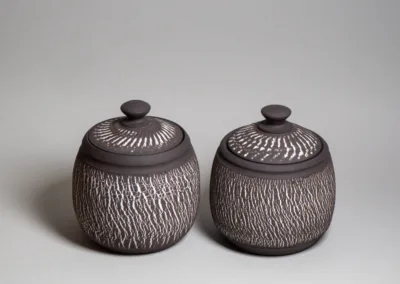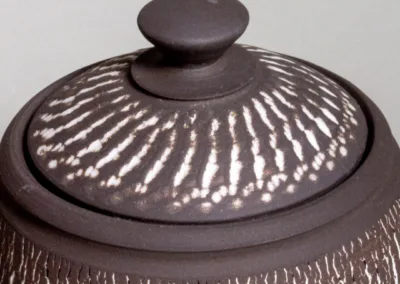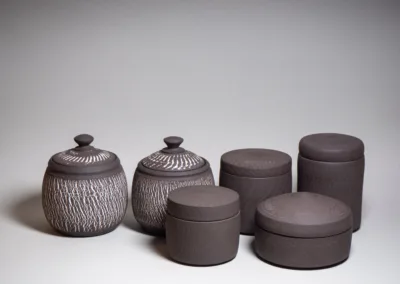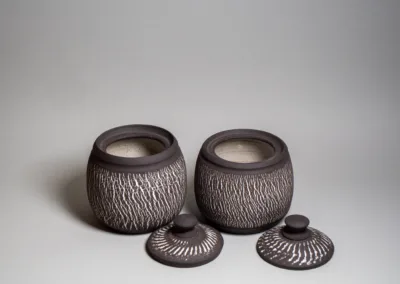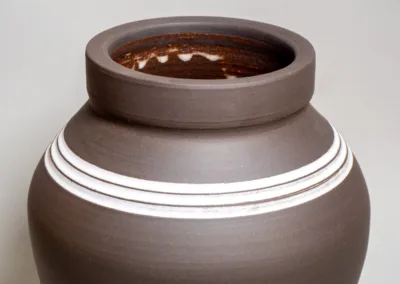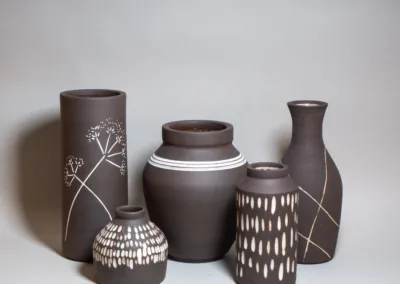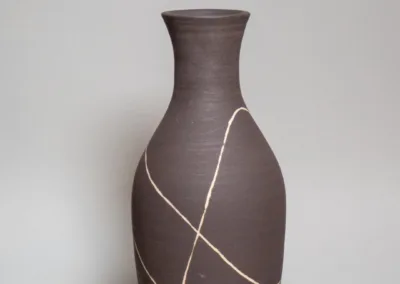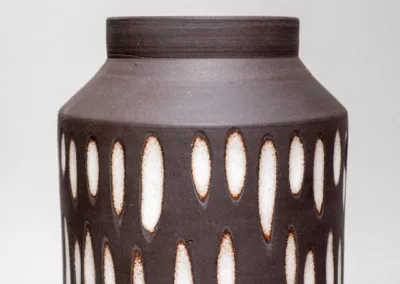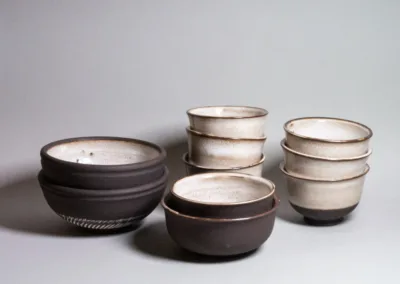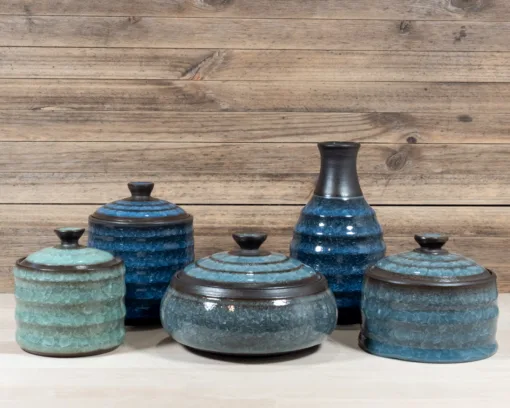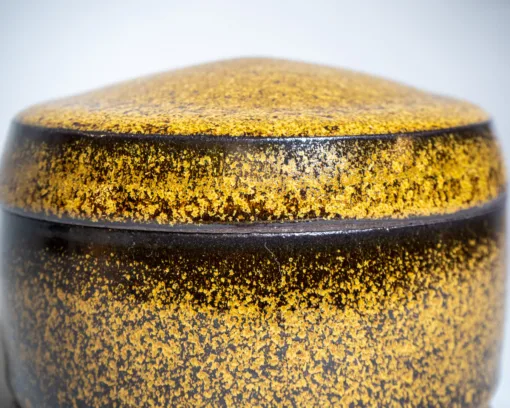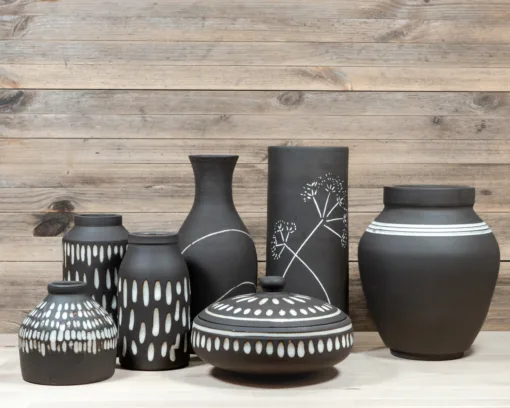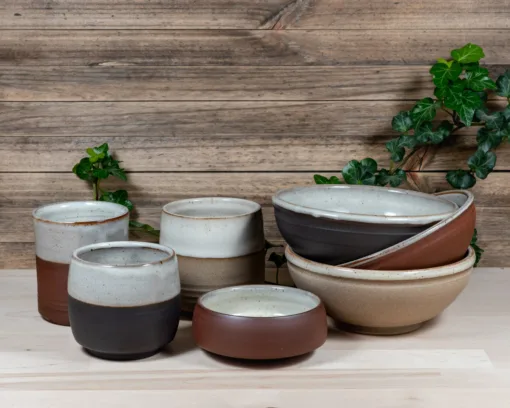Back and white
Shadows hide the color opening the playground of light and dark.
Made from black Spanish stoneware clay with added contrast or sometimes just bare black natural clay to pay tribute to the material itself.
Just black or white on black
This is perhaps a plain and boring style collection. But that depends on the preferences and personal taste. There are no colors in it, just the play of black and white and shades and shadows. Occasionally still the white glaze I use here produces a brownish hue to the areas where the glaze layer is very thin, but more often just the dark clay adds some geryish tint there instead resembling the early morning mist.
I use a Spanish black stoneware with a lot of very fine crog. When well burnished the bare matt surface has a silky soft and warm touch. The back color of this clay has still warmth in it being calm and silent.
The combinations of glazed and unglazed areas is part of my handwriting, I find it dull but also disrespectful to the old material to totally cover it with glossy glaze surfaces. Leaving unglazed areas is my way to respect the material I use, giving us the opportunity to understand and feel the material itself.
I vary here with shades of black and white, but as well with texture added to the clay, sometimes leaving the exterior fully unglazed with just some slight texture on the body to enhance the look and feel.
I hope it brings calmness, and silence as there is in the forest in the middle of the night.
Different styles
Ice crackle
A glaze with many names: ice crackle, tortoise shell, snowflake and many more.
Made with thick layer of crackle glaze where the fractures develop the look of cracked ice. Hence also its name – Ice Crackle.
Stardust
When the odds become even during the firing process the iron rich glaze develops beautiful golden microcrystals. Sometimes covering the whole ware with golden hue and other times just few golden sparks like stars.
Glaze that’s originally called “Tea-Dust” and was mainly used in Imperial ware.
Everyday
You come home, make tea, sit in the armchair, and catch your breath...
Here are cups, bowls and other simple dishes that give everyday life a calm, clean, modest, and rustic feel.
Made from different colored stoneware where mainly inside of the ware is glazed so that the clay itself would be brought out.

